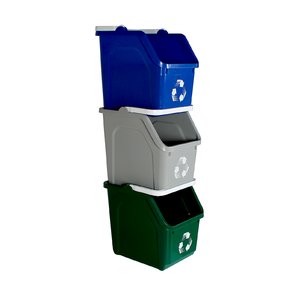The goal in recycling metals, plastics, glass, paper, and wood is to eliminate waste going to landfills or incinerators and to conserve natural resources. Aluminum cans be recycled into aluminum cans over and over again, but few materials can travel through a “closed loop” like this, creating zero waste. Most materials have to go through an open loop recycling process. In this “secondary recycling process,” a discarded object is broken down and its raw materials are used to create a different product. (For a more details, read Closed Loop vs. Open Loop recycling)
Benefits of Open Loop Recycling
If you can get materials separated into their pure form so they can be reused in new products, it will help
reduce the need for virgin raw materials and delay waste generation. Keeping resources in the economy for as long as possible is the goal here. The more times a product can be recycled before it reaches the end of its lifespan to becomes waste, is called “cascading”. Open loop recycling (especially cascading) keeps materials in use longer, limiting the need for new virgin material to be harvested from the earth.
Resources Saved
Open loop recycling doesn’t completely eliminate the need for new raw material but it does help conserve these natural resources. In the case of plastics, this means fewer oil wells drilled. In the case of metals, fewer mountains mined. In the case of paper, fewer trees cut down. Overall this means less expended energy. This is definitely an instance where less is more.
Conclusion
Ideally, we’d live in a world that is completely sustainable and circular. No new raw materials needed and no waste discarded. A 100% closed loop recycling system like that may be ideal but until we can accomplish that, open loop recycling is the next best thing.
What do you think? Share your comments, questions, and suggestions below…